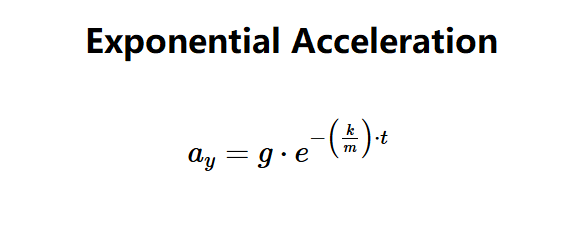 Home
Home
 Back
Back

Definition: This calculator computes the acceleration (\( a_y \)) of an object influenced by a resistance factor, using the formula \( a_y = g \cdot e^{\left(-\frac{k}{m}\right) t} \).
Purpose: It helps physicists, engineers, and students model motion with exponential resistance, such as air drag or friction, in fields like mechanics and aerodynamics.
The calculator uses the relationship:
Where:
Explanation: Enter \( k \), \( m \) with its unit, \( t \) with its unit, and the calculator computes \( a_y \) in m/s², ft/s², and grav, accounting for unit conversions.
Details: Exponential acceleration models are crucial for understanding motion with resistance, such as terminal velocity scenarios. Units like m/s² and ft/s² are standard, while grav (multiples of g) is useful in aerospace and safety engineering.
Tips: Enter a positive value for \( k \), select \( m \) and \( t \) units, and click "Calculate." Results show acceleration in m/s², ft/s², and grav (to 2 decimal places, or in scientific notation if less than 0.0001).